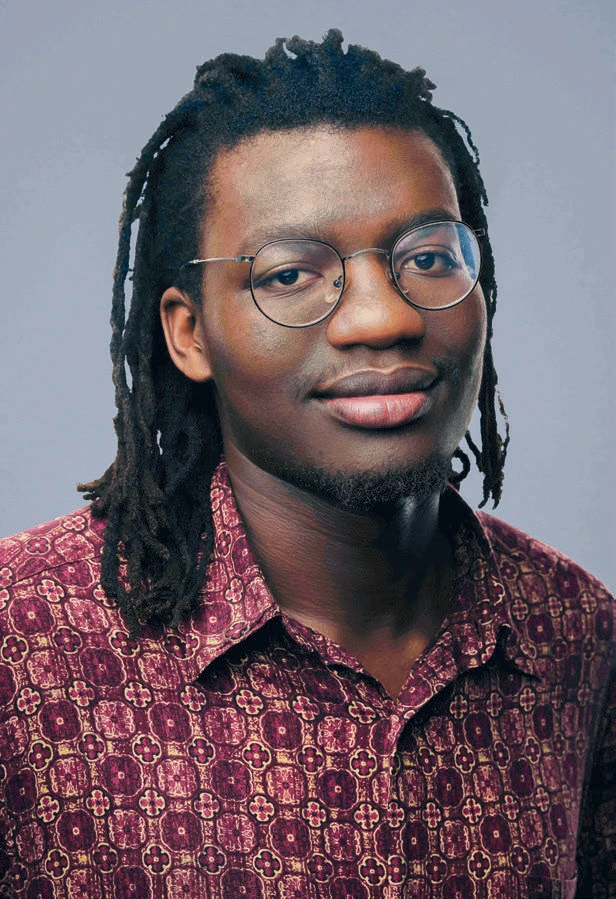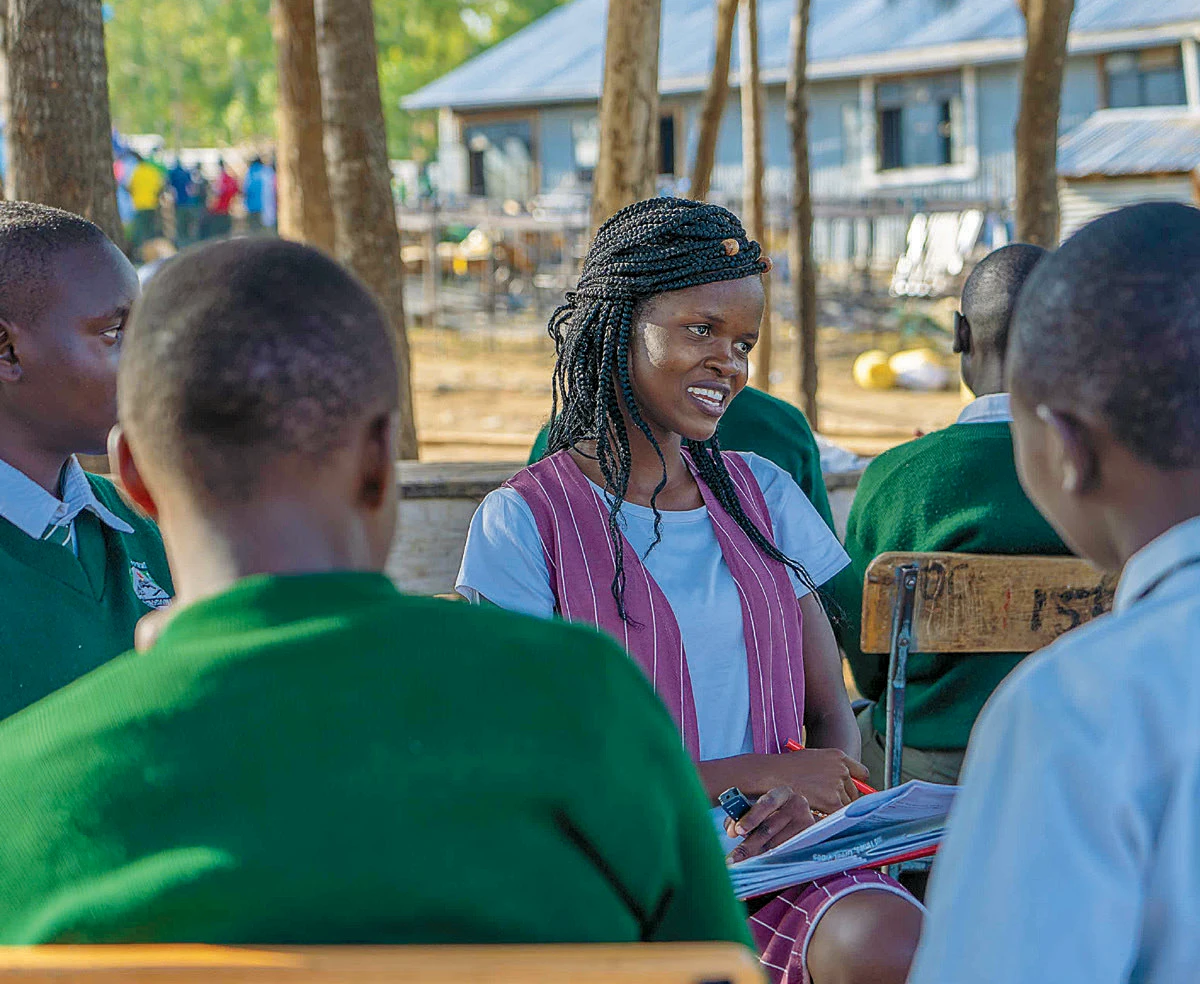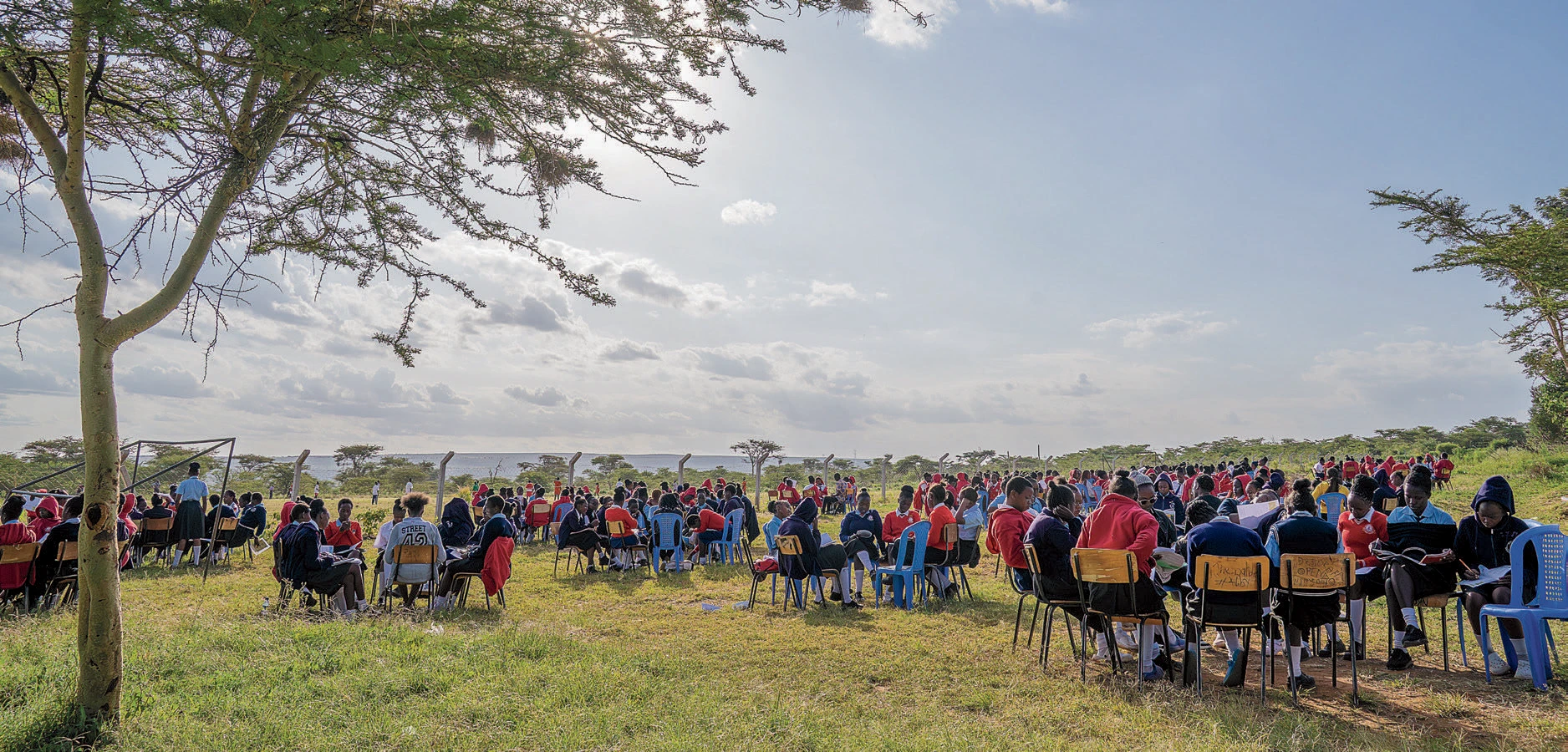Since the pandemic, youth mental health has deteriorated. Today, nearly one in seven adolescents across the globe lives with a mental health disorder. Suicide ranks as the third-leading cause of death among 15- to 29-year-olds. Survey after survey reveals a generation increasingly weighed down by anxiety, sadness, and despair.
One popular intervention is cognitive behavioral therapy (CBT), in which a licensed professional treats one patient at a time, often in a private clinic or hospital setting. But for many young people across the world, that model is inaccessible, with long waitlists and a shortage of trained providers. It’s also not always the right fit, says Tom Osborn ’20, a Kenyan social entrepreneur. CBT, which gives patients the tools to change thoughts and behaviors, is well-suited for treating acute symptoms, Osborn says. But many young people’s mental health issues center around diffuse, existential concerns: belonging, identity, the future.

In 2018, Osborn co-founded the Shamiri Institute, a Kenyan nonprofit named after the Swahili word for “thrive,” to reimagine how mental health care is delivered to young people in his home country, and beyond. In this model, young adults aged 18 to 22—who have received 10 hours of training but are not licensed professionals—spend four weeks leading weekly one-hour sessions integrated into the school day, focused on building skills such as gratitude, growth mindset, and problem-solving.
The peer-led group format is designed to be approachable and relatable. Everyone participates; there’s no sign-up sheet, no diagnosis, no label, and therefore no stigma. Students with more complex or acute needs are referred to licensed professionals.
The program has reached over 180,000 students, between 12 and 19 years old, in Kenya. Peer-reviewed studies show that more than 80 percent of students who have participated in the workshops experienced improved well-being—and it costs about 15 dollars per individual.

The idea for Shamiri was planted at Harvard, but Osborn’s journey to social entrepreneurship began far from the gates of the Yard. He grew up in a small rural village of about 400 families in Migori County, in western Kenya. He spent his childhood helping on his parents’ sugarcane farm and attending the local public school, where he quickly stood out. By the time he reached middle school, his uncle worried that he might be limited by the resources at the school.
So, when Osborn was 10, his uncle organized a harambee—a community fund- raiser, named after the Swahili phrase meaning “all pull together.” Neighbors, relatives, and friends pooled their savings to help send Osborn to a better school in a nearby town. Their investment paid off. In the eighth grade national exam, which determines high school placement, Osborn ranked first in his district. He secured a coveted spot at Alliance National High School, a prestigious boarding school on the outskirts of Nairobi. It was the first time he had ever left his village.
In high school, Osborn imagined he might become a lawyer. He liked reading and writing, and law seemed like a direct way to help others. But during his junior year, while home on a break, he found his mother sick with a respiratory tract infection—an illness linked to the smoke from open-fire cooking, which she and many women in the community relied on.
“I felt like I needed to do something about it,” Osborn says. Back at school, he began researching alternative cooking fuels and discovered a paper by a group of MIT researchers studying how to convert agricultural waste into cleaner-burning briquettes. Osborn took the idea and turned it into a project for Science Congress, a kind of national fair for student-led research and invention.
Not long after, Alliance was visited by David Sengeh ’10 (then a recent Harvard graduate, now the chief minister of Sierra Leone), who was scouting promising student projects for an initiative to support youth innovation in Kenya. Osborn applied and was selected for a weeklong boot camp designed to help students refine and scale their ideas.
Shortly after that, Osborn co-founded GreenChar, a social enterprise that gained international recognition for providing low-cost, smokeless cooking briquettes to families, schools, and households across Kenya. The experience taught him that, with a bit of support, a young person from a small village could address problems long overlooked by institutions and experts. “It shifted my mindset—from wanting to become a lawyer or pursue a traditional career path,” he says, “to seeing myself as an innovator and entrepreneur.”
Osborn put off college to focus on growing GreenChar. But by 2015, Sengeh encouraged him to consider another leap: applying to college in the United States. Osborn got into Harvard, receiving a full financial aid package and becoming the first in his family to attend university.
At Harvard, Osborn sampled widely, taking classes in writing, computer science, and economics. Then, during his sophomore year, he enrolled in SLS 20, Harvard’s introductory psychology course, taught by Pierce professor of psychology Daniel Gilbert (author of the bestselling book Stumbling on Happiness). “It seems over the top,” Osborn says, “but that class changed my life.”
It was the first time he had encountered mental health as a serious academic pursuit—something one could study, test, and improve through research. And it reinforced what he had learned during his time at GreenChar: that small, well-designed interventions could have large-scale impact.
If a simple psychological insight could change how young people thought about themselves, Osborn thought, then maybe mental health care didn’t have to begin in a clinic.
He was struck by scholar and psychologist Carol Dweck’s work on growth mindset, which showed how a subtle shift in how students understand their own intelligence could measurably improve motivation, resilience, and academic performance. If a simple psychological insight could change how young people thought about themselves, Osborn thought, then maybe mental health care didn’t have to begin in a clinic. Maybe it could start in a classroom.
He concentrated in psychology and worked in the lab of Henry Ford II research professor John R. Weisz, where he connected with then-graduate student Jessica Schleider (who earned her doctorate in 2018). Schleider was developing simple, single-session mental health interventions focused on skills like growth mindset and values affirmation.
Unlike traditional CBT, these sessions were short, scalable, and easy to integrate into students’ daily lives. Osborn saw that these qualities could make them particularly effective in Kenya, where mental health stigma and insufficient resources can limit access to care. And he had an idea for how to adapt the approach: what if it became a group endeavor, rather than an individual one?
He drew on that work for a pilot study in Kenya. With Weisz’s support, and with grant funding from Harvard’s Center for African Studies and the Office of Career Services, Osborn returned to Kenya for the summer of 2019 with a few fellow Harvard students to test a four-week intervention.
The pilot yielded promising results, showing reductions in students’ feelings of depression and anxiety, as well as better academic performance. After reviewing the data, Weisz encouraged Osborn to apply for a $210,000 grant from the Templeton World Charity Foundation to scale the work. Osborn’s team was awarded the funding in January 2020, his senior year, and Osborn moved to Nairobi after graduation to pursue the project full-time.
The early days of building Shamiri were intense and exhausting. “It felt like we were working Wall Street hours,” he recalls, “just without the lifestyle.” Only four people on the team, including Osborn, were handling everything—from coordinating school schedules and transportation to managing operations and logistics.
They realized that if they wanted to grow beyond a handful of schools, they couldn’t run everything themselves. So they built what they called “Shamiri Hubs”—local teams that ran programs in their own communities. It worked. In 2022, they were reaching 1,000 students. By 2024, they had reached 100,000.

Shamiri’s next goal had initially been to reach a million young people across Kenya by 2028. But recently, as at many nonprofits reliant on global development funding from agencies like the U.S. Agency for International Development (USAID), Shamiri’s leaders have had to rethink how they can continue to grow sustainably.
Osborn doesn’t have a perfect answer. He’s exploring a hybrid model: communities that can afford to pay will subsidize those who can’t, with governments contributing what they can.
Eventually, he hopes to innovate beyond mental health and clean energy, turning his focus to a broader, more systemic challenge: how institutions themselves can better serve the people who rely on them. “One of the greatest challenges for my generation in Kenya is that so many young people don’t have real pathways to live the lives they dream of,” Osborn says. The impediments to those lives can take many forms—from environmental degradation to mental health challenges.
His goal is to give more young people the chance to do what he did: recognize problems and feel equipped to solve them. “I want to spend more time figuring out how democracy and government can create more opportunities for young people,” he says, “not just in Kenya, but across Africa.”









